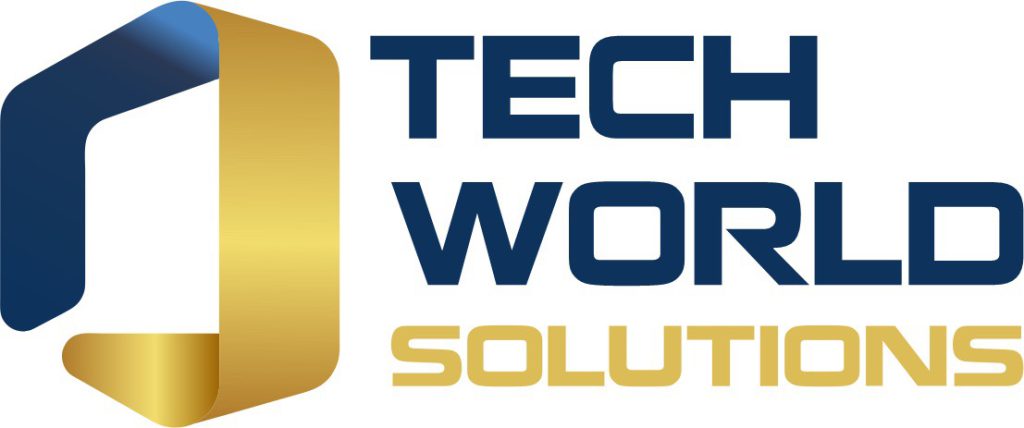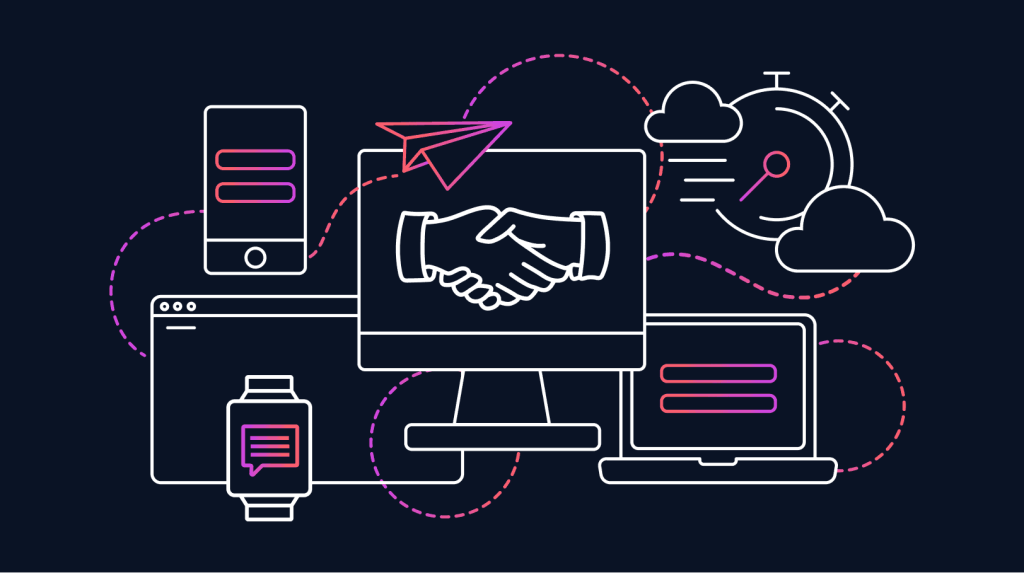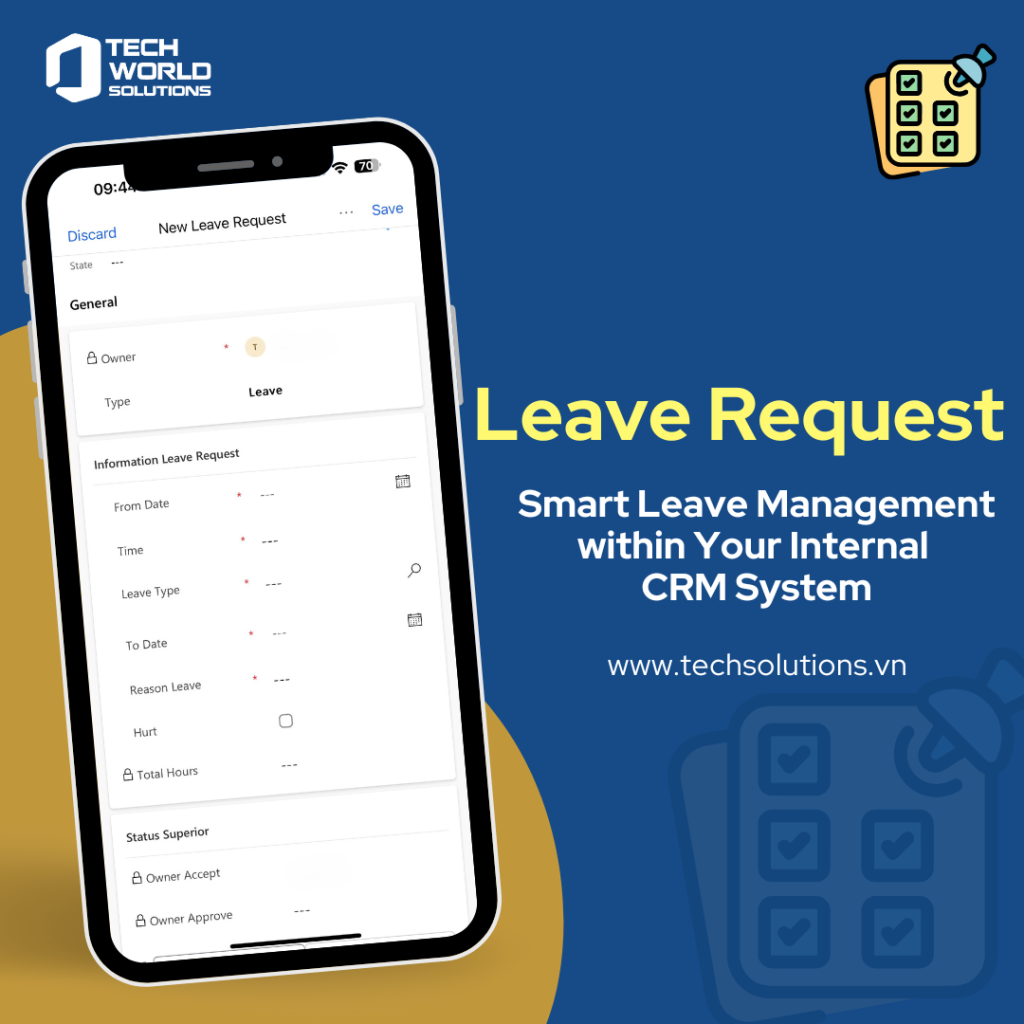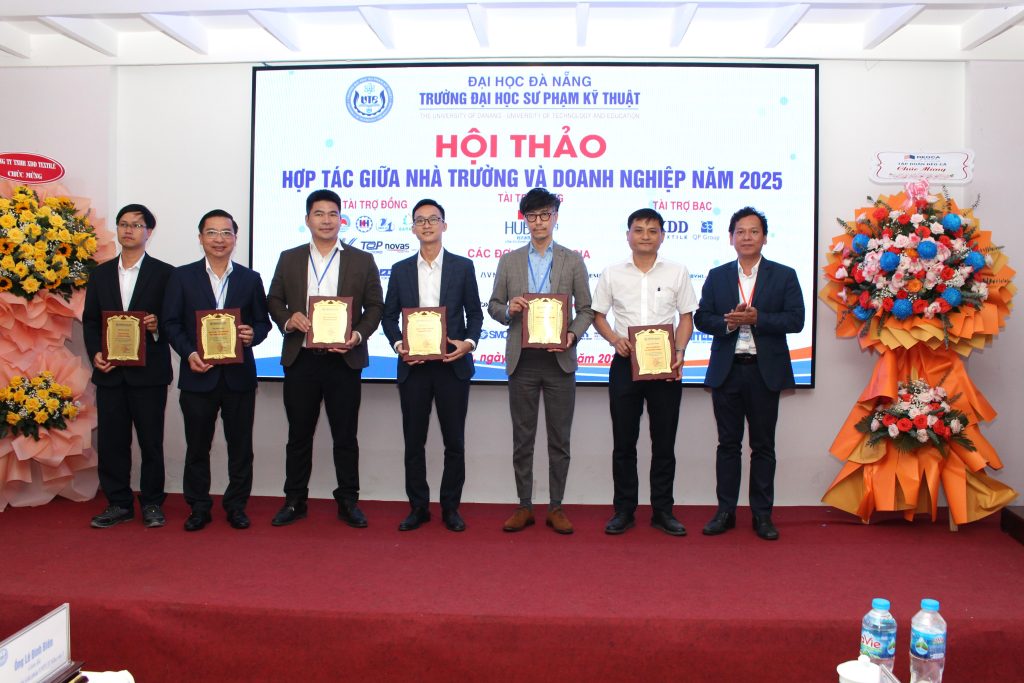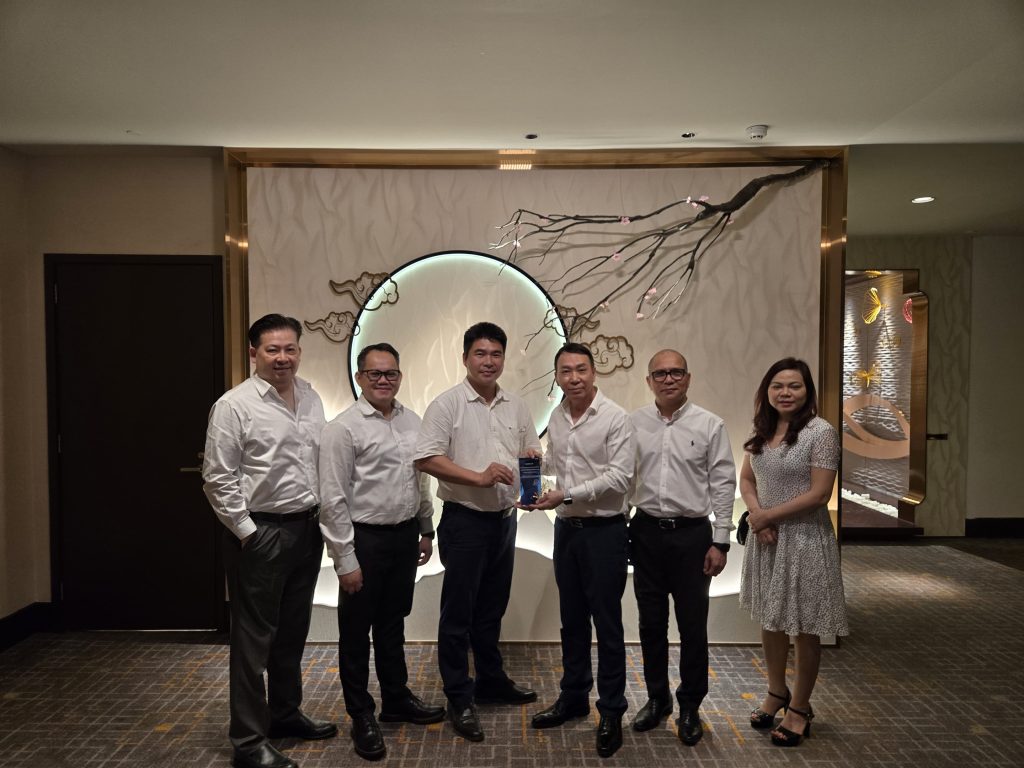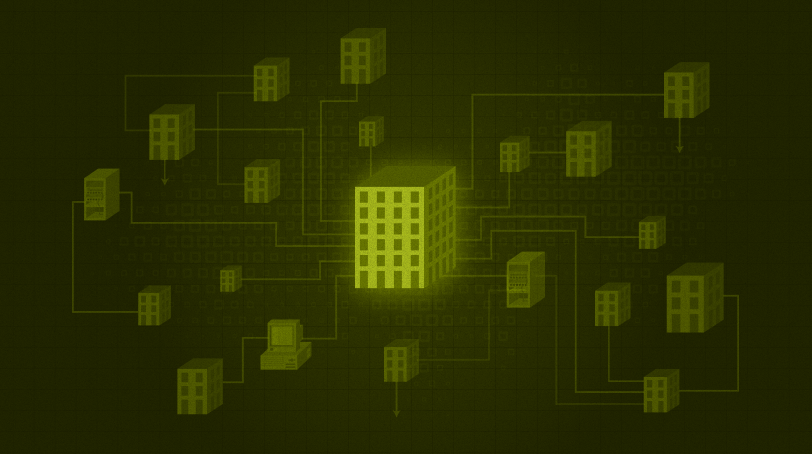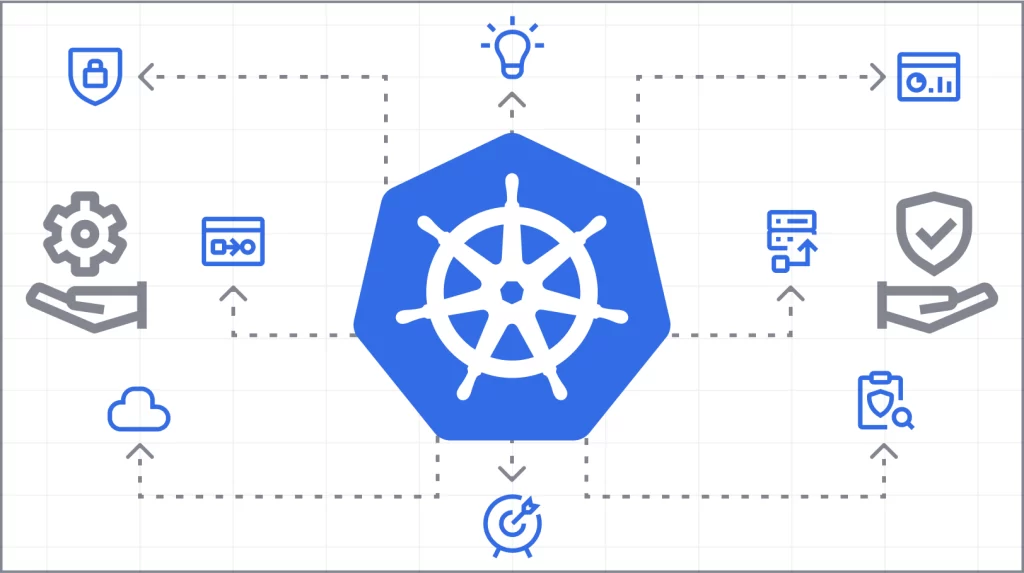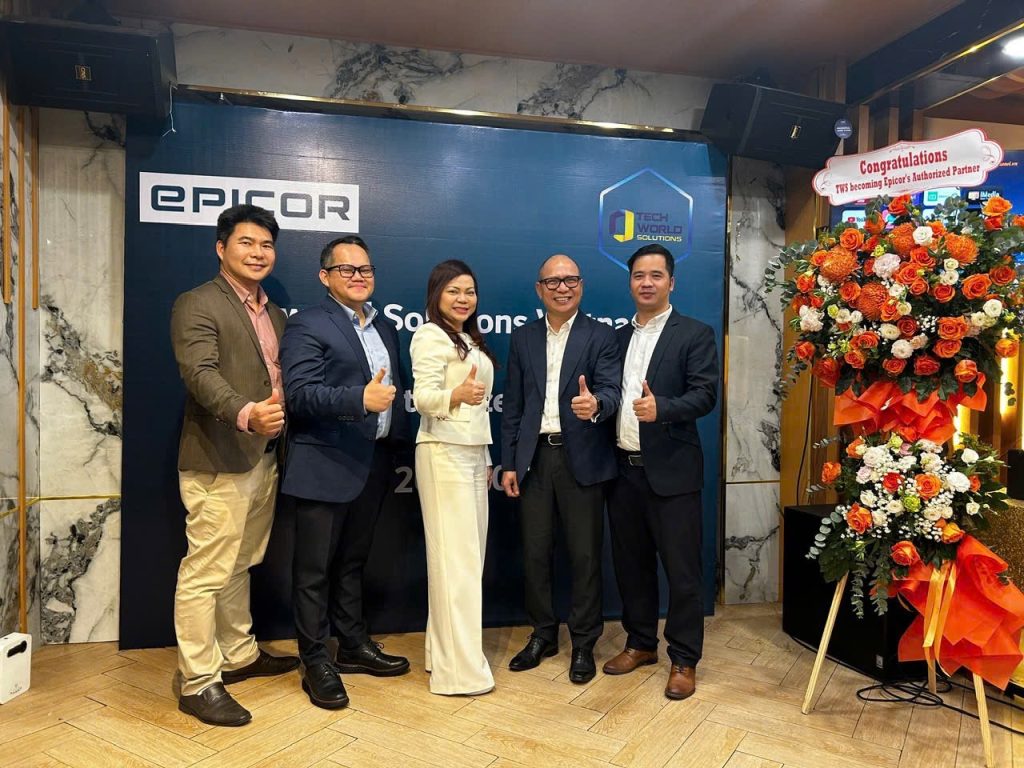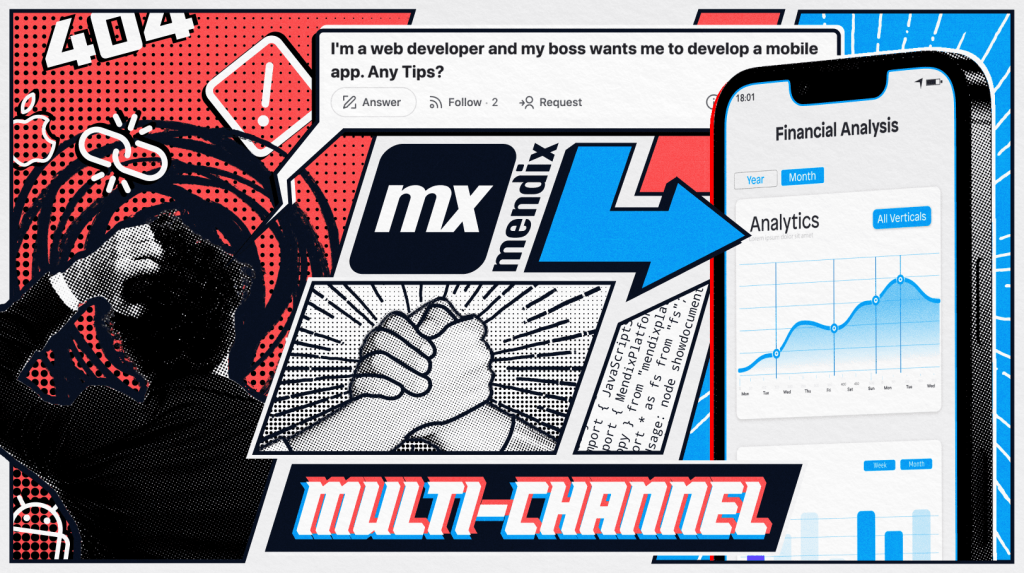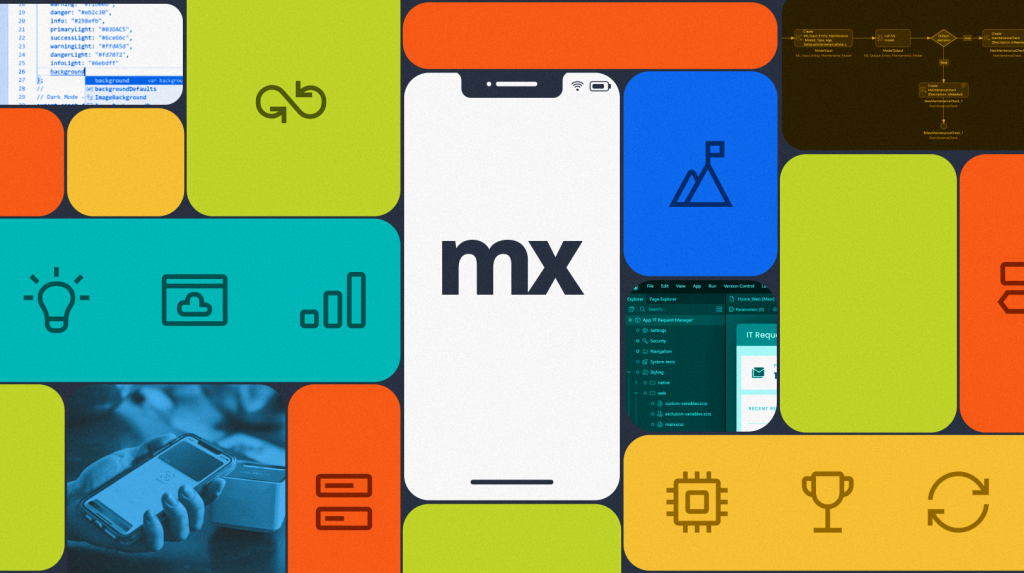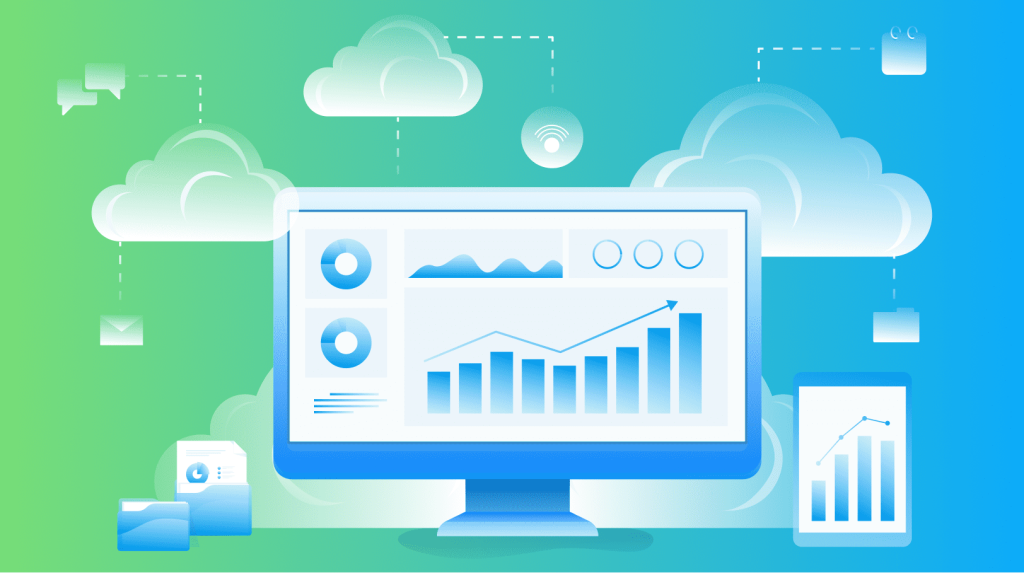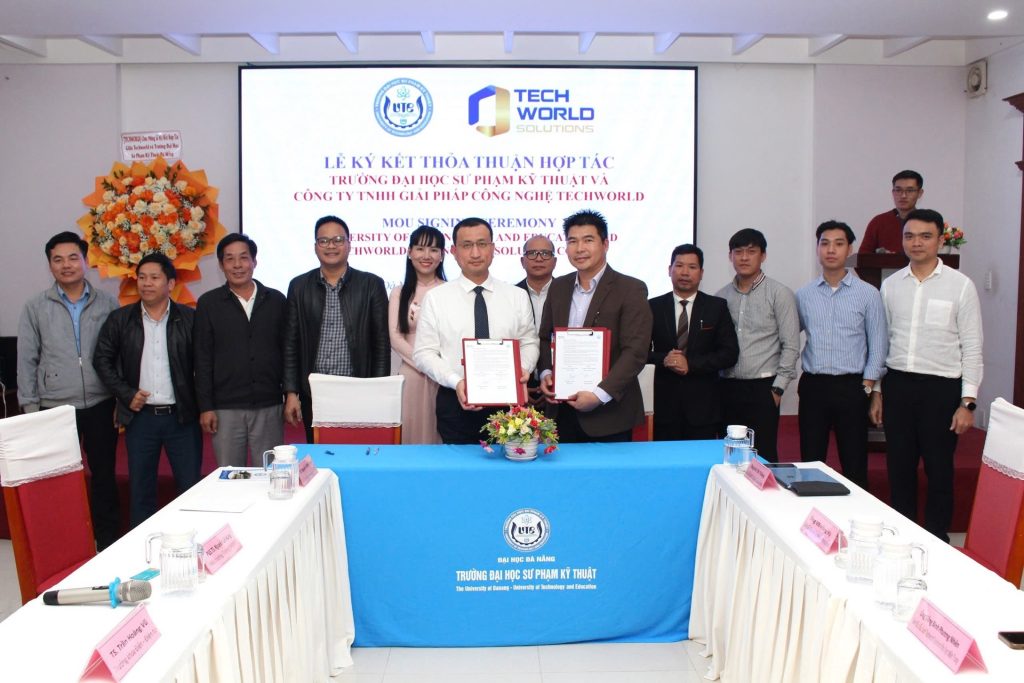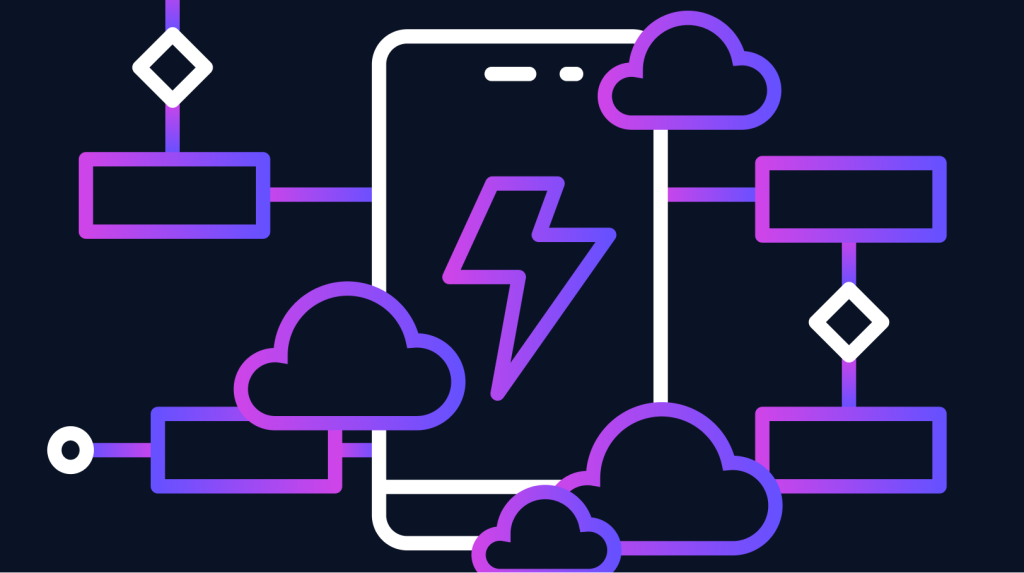Customer-Facing Apps: Examples, Benefits, and Challenges
What does customer-facing mean?
Something that is customer-facing is the interface or experience that a customer accesses and sees. Techopedia defines customer-facing as “the manner in which a business service feature is experienced or seen by a customer.”
Customer-facing is a term used to discuss user experience (UX) and application development. Client-facing, user-facing, or consumer-facing technology similarly describes the client, user, or consumer’s experience with your product.
A lot of work can go into making a superb customer-facing experience. Some work is not visible to the customer. However, behind the scenes, it contributes to creating a smooth and effortless experience.
What are customer-facing applications?
Customer-facing applications are the apps that your customers use to connect and engage with your business. These are often in the form of mobile applications or customer portals. For example, a client-facing web app is the part of the app that a client uses on the web.
Customer engagement apps enable users to better interact and transact with a business, which enhances customer satisfaction, retention, and revenue. Examples of customer-facing applications include:
The competitive advantage of customer-facing apps
Customer-facing applications provide maximum convenience for customers and prospects.
If you’re building a mobile app, your users will have constant access to your brand, even on the go. If you’re making a portal for customers, vendors, agents, or brokers, you can customize it to suit each user’s requirements.
Customer-facing apps can provide instant customer service, which can significantly impact revenue. Bain & Company reports that businesses can increase revenue by 4% to 8% when they offer valuable customer service experiences.
Apps and portals also make it easier to showcase your products and services. If your competitors don’t provide a similar offering, consumer-facing technology can boost your competitive advantage.
3 app development challenges and the low-code solutions
1. Limited resources, budgets, and UX skills
Building an engaging consumer-facing app is challenging for companies with limited UX resources. However, the global adoption of low-code development has made custom app development more attainable for everyone.
G2 reports that 84% of enterprises have embraced low-code development “because of its ability to reduce strain on IT resources, increase speed-to-market, and involve the business in digital asset development.”
Low-code platforms make app building easy for people of all development skill levels, including the business team and non-developers. Low-code platforms have mobile and UX resources so users can build dynamic native-mobile apps quickly.
2. Complex integration processes
Connecting new customer- or client-facing apps to existing systems using traditional development methods is a sophisticated process. However, integrations are a crucial part of the development process. Especially if you want your app to contain customer support, purchasing capabilities, or any other on-demand service features.
You can build custom integrations using a sophisticated programming language. Or you can use a low-code platform with built-in connectors to third-party systems.
Low-code platforms also provide professional developers with environments to create custom connectors when needed.
3. Scaling and delivering the performance customers expect
Customer-facing applications often have high expectations from users regarding usability. If your app routinely crashes, takes too long to load, or constantly requires maintenance, your users will take note.
According to Google, only 9% of people will continue to use a mobile app if it provides a poor user experience.
Every customer-facing process must incorporate scalability and reliability. However, this can be a complex undertaking with traditional development. On the other hand, low-code platforms have the following built-in features to ensure that your app continues to deliver value:
- Automatic failover for continuous operation of critical apps or portals
- True multi-cloud deployment strategies
- On-demand scaling (vertically and horizontally)
- The ability to leverage best-of-breed CI/CD pipeline tools for seamless automation
- The ability to migrate apps across clouds
Your app’s loading time is one of the most important factors for reliability. Neuroscience researchers found that customers see slow mobile loading times as more physiologically stressful than watching a horror film.
2 examples of successful customer-facing app development
1. A pension portal that scales to over one million users
AZL’s custom web portal for pension holders is a great example of a customer-facing application with lots of users.
As a leading Dutch pension administrator, AZL handles more than 60 pension funds with more than 1 million participants. While their business model had historically focused on traditional operations, their customers’ preferences were changing. The traditional operations included:
- Call centers with a high number of inbound calls
- Limited, inconvenient operating hours, which led to poor overall customer satisfaction
- High internal costs due to manual, paper-based processes
To improve the exchange of information with third parties, AZL started with a new administrative portal for employers. Next, they extended this self-service model to pension participants. AZL used the Mendix low-code platform to deliver a new portal in a much quicker, more agile fashion.
AZL chose low-code to deliver a standard application they could customize for each fund’s unique processes.
Now, participants can do more in their own time. The self-service portal skyrocketed customer engagement, and AZL has seen a 40% reduction in pension fund administration costs.
2. A broker portal with successful low-code integration
A top insurance company used low-code to create a better experience for brokers and clients, called the Broker Portal.
Unlike competitors, the company goes to market through brokers, not directly to clients. Orchestrating great experiences and the right product offerings across a distributed geographic footprint takes time and effort.
The company integrated the Broker Portal with its existing systems, including Duck Creek. It acts as an integration and business process layer by extracting and orchestrating data between systems.
Next, the company wanted to expand to other markets with similar customers after its product was successful in the UK. The company chose France next.
However, creating French lines and digital experiences for a new insurance product would cost millions and take 24-28 months. But using Mendix and reusing integrations to core systems, business process logic, and user interfaces, the company created the same or better client-facing products and experiences in six to nine months.
The company gained an 18-month advantage earning revenue and gathering information for selling more products and services. As a result, they could continue to deliver superb customer-facing processes and experiences. They reached this achievement by building upon a modular, component-based architecture with the Mendix low-code platform.
- Enterprise Resource Planning (ERP)
- Mendix on Edge: There’s Never Been a Better Way to Build Shop Floor Applications
- Sự Tiến Hóa Tiếp Theo Của Mendix Cloud: Đón Nhận Kubernetes Để Xây Dựng Nền Tảng Sẵn Sàng Cho Tương Lai
- Unveiling the Synergy: Mendix and AI Paving the Path for Future Business Success
- What is the Future of Mobile App Development? 5 Trends to Watch
Bài viết cùng chủ đề:
-
Leave Request – Quản lý nghỉ phép thông minh trong một mô-đun CRM duy nhất
-
Techworld Solutions Đồng Hành Cùng UTE Trong Đào Tạo Nhân Lực Chất Lượng Cao
-
Microsoft Office chính thức chuyển thành Microsoft 365
-
Epicor Asia & Techworld Solutions Vietnam Chính Thức Công Bố Quan Hệ Đối Tác Chiến Lược, Mở Rộng Hệ Sinh Thái Giải Pháp Tại Việt Nam và Khu Vực
-
Chúc mừng đội ngũ Microsoft!
-
Giá trị của Microservices Doanh Nghiệp với Low-Code
-
Sự Tiến Hóa Tiếp Theo Của Mendix Cloud: Đón Nhận Kubernetes Để Xây Dựng Nền Tảng Sẵn Sàng Cho Tương Lai
-
Optimizing Production with Epicor ERP – Specialized Solutions for Complex Industries
-
Addressing the Knowledge Gap
-
AI-Assisted Development in Action with Mendix
-
Empowering Mobile Innovation
-
How to Upgrade Legacy Systems to Compete in the Cloud Age
-
TECHWORLD SOLUTIONS VIỆT NAM VÀ ĐẠI HỌC SPKT ĐÀ NẴNG KÝ KẾT HỢP TÁC TRIỂN KHAI TRUNG TÂM NGHIÊN CỨU & ĐÀO TẠO CÔNG NGHỆ SỐ
-
How to Architect Your Mobile Customer & Employee Experiences
-
PVI Gia Định Partners with Techworld Solutions Vietnam to Revolutionize Insurance Management
-
ESEC Group Partners with Techworld Solutions Vietnam to Implement Microsoft Dynamics 365 ERP
